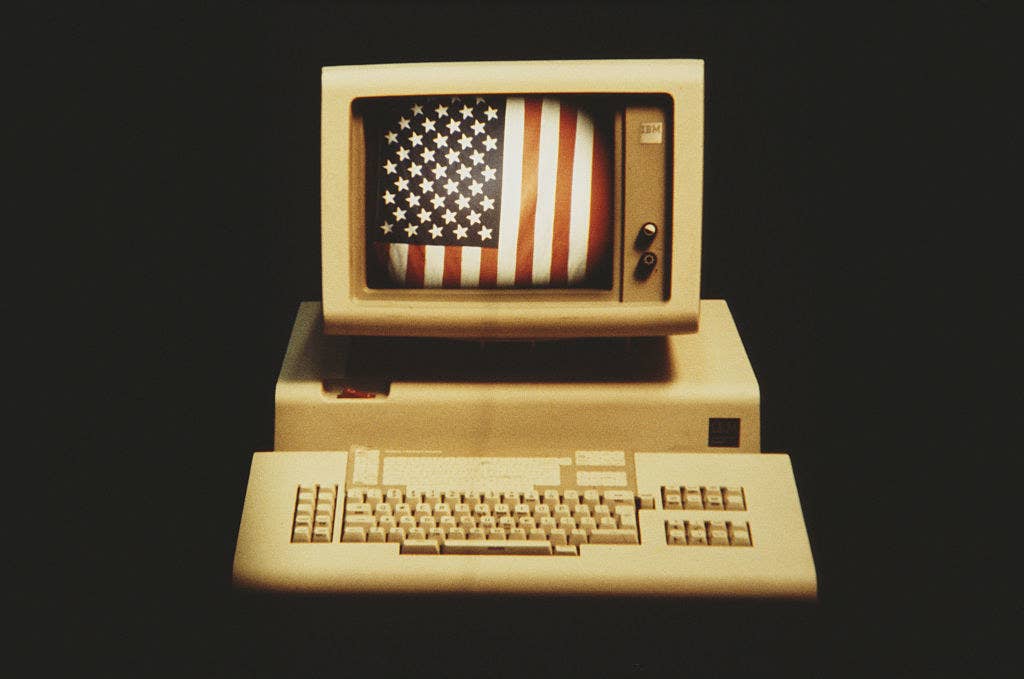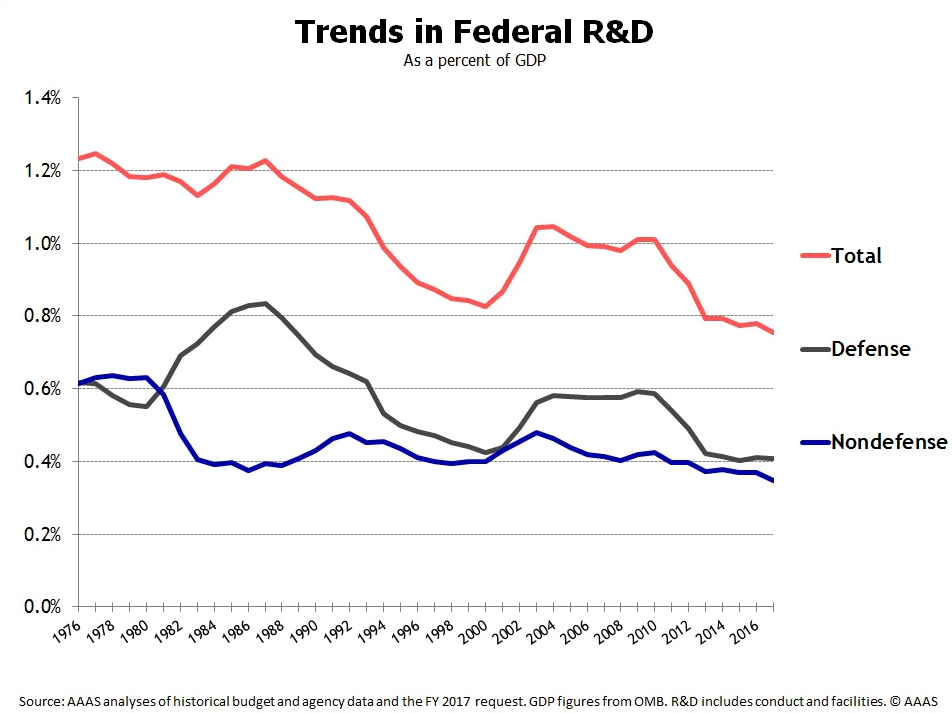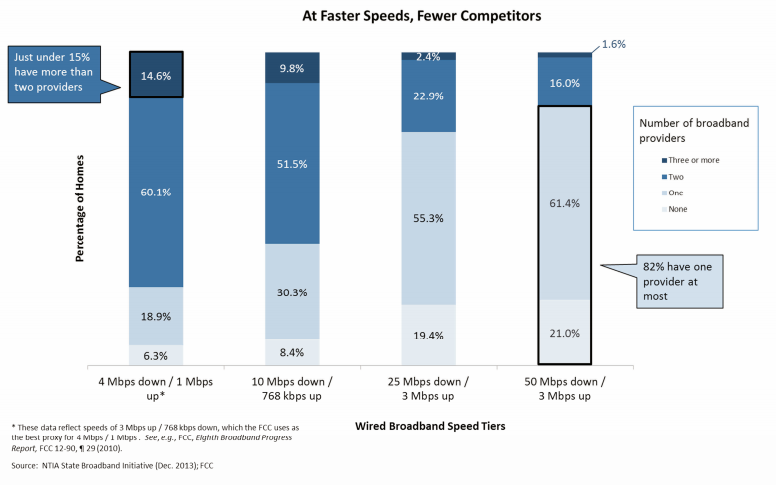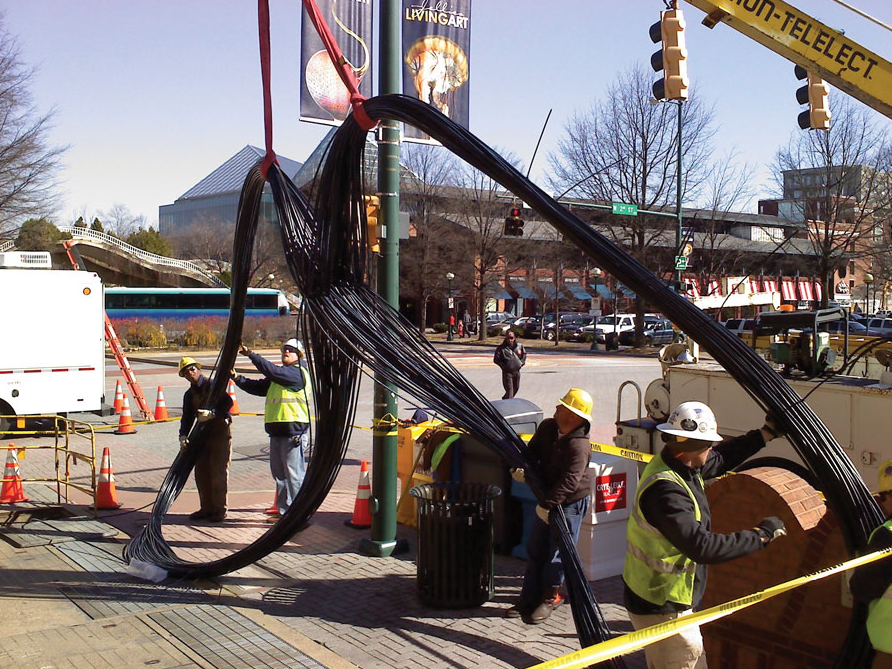
For the past decade, some of the world’s biggest, wealthiest, and most important companies have been making long term, outlandishly expensive bets on technology aimed at re-shaping the future. Think self-driving cars, and high altitude drones that never need to land. In the industry they’re even referred to as Moonshots, a reference to the space race that changed science and the perception of American innovation forever.
What’s often left out of the moon shot conversation though is how we got here. The internet, Space X, driverless cars, and just about everything to do with computing from graphics displays to magnetic core memory are part of long complex history of progress with a common point of origin: the federal government of the United States. And today, there is once again a major opportunity for the federal government to play a role in investing in infrastructure that could fuel growth for a new generation by bankrolling the next generation of wireless technology and providing universal broadband to all Americans.
If you want to kick start innovation, and create employment, opportunity and even wealth for large numbers of people, government investment in in infrastructure, research and development is a proven way to do it. In many ways, the public-private innovation cycle is centuries old, each sector building off the advancements of the last, with the government often leading in infrastructure to pass off its technology to more nimble private companies. Many of the largest and most innovative companies in the world - Google, Apple, GE, Microsoft, Cisco, Boeing, and IBM among them - owe their success and in some cases very existence to investments made by the United States federal government.
Here are just a few examples.
The rocketry and aerospace engineering behind SpaceX (as well as Jeff Bezos’ space company Blue Origin) is a descendent of NASA, a federal organization created by Congress in response to the Sputnik crisis and the Russian space race. In the1960’s close to 5% of the federal budget went toward NASA. One estimate suggests that between 1959 and 2003, NASA spent a total of $466 billion dollars.
Google, Uber and (presumably) Apple’s self-driving cars are to a very large extent results of the Department of Defense’s DARPA Autonomous Land Vehicle (ALV) project that birthed leaps in lidar (a laser light detection system that is similar in practice to radar) and computer vision, and 20 years later, the DARPA Grand Challenge
The GPS that makes Uber possible? Thank the defense department for that too, which not only built the technology, but maintains the Global Positioning System that underpins countless tech products from Google Maps, to drones, to Instacart’s door-to-door Doritos delivery.
Government investment in infrastructure sometimes reveals itself in unforeseen ways, like the New Deal-backed Grand Coulee Dam project in the Pacific Northwest that turned Boeing into a titan of aerospace and one of America’s most important corporations. You could even make a case that it won World War II, as the Grand Coulee essentially powered the company’s manufacturing of US war planes.

But perhaps the best example of government’s ability to fuel innovation is by looking at the investment that made companies like Google, Uber, Facebook, Twitter, Netscape, and essentially the entire tech and internet boom of the past twenty years possible.
While the Pentagon-backed ARPANet was light years away from what we conceive of now as the modern internet, the government project laid the foundation for the most transformative communications technology of all time. Scientific American editor, Michael Moyer, sums up its importance nicely. “In truth, no private company would have been capable of developing a project like the Internet, which required years of R&D efforts spread out over scores of far-flung agencies, and which began to take off only after decades of investment.”
It’s this idea — that the most transformational American-built technologies are far too ambitious in scale and scope and cost to be built privately — that has slipped from our public consciousness of late. Take this 2013 quote from prominent investor, Chamath Palihapitiya:
“Companies are transcending power now. We are becoming the eminent vehicles for change and influence, and capital structures that matter. If companies shut down, the stock market would collapse. If the government shuts down, nothing happens and we all move on, because it just doesn't matter.”
While venture capital and private companies tend to propel modern innovation, historically, the industry’s connective tissue comes from steady federal support from a government unconcerned with 10x returns and unburdened by the need to see immediate results. And as tech’s biggest companies slowly begin to cash in on their moonshots, it’s even easier to lose sight of the projects that only the government can do and would make America better in terms of economic opportunity.
And if there’s one project that’s so big that no one company could take it on alone both because it won’t return a profit and because it is as sprawling and full of complications as Eisenhower's Interstate Highway system, it’s universal 5G broadband. And just like the interstate highway system, it has the same ability to bring a wealth of economic opportunity to Americans who are currently cut off from it.
As recently as last year, the United States ranked 14th in average internet connection speeds, clocking in at an average of 12.6 megabits per second — well below the FCC’s benchmark standard of 25 mbps for broadband — behind countries like Romania, Belgium, and Finland. And yet Americans pay more for broadband access than almost anywhere else on the planet. New America’s 2014 Cost of Connectivity report reveals that “the average cost of plans in nearly every speed tier we selected is higher in the U.S. than in Europe” with speeds in cities like New York coming out to roughly double that of a similar connection in London.
As a result, the FCC estimates that this year that 34 million — or 10% of U.S. residents — lack access to broadband service. Unsurprisingly, impoverished and rural areas are most often disconnected with roughly 23 million Americans bridged by the country’s digital divide. Broadband infrastructure is either absent altogether or so unaffordable that 22% of households making under $30,000 in annual income lack access to the kinds of speeds they need to participate in an increasingly digital workforce; similarly, only 53% of households run by adults without high school diplomas are connected to the internet, according to Pew. The problem so great that it causes generational problem; children growing up in homes without broadband sometimes lack the ability to complete homework assignments, apply for the college of their choosing, or to fill out financial aid forms.
America’s internet infrastructure is broken enough that the FCC has acknowledged the problem. In 2014, Chairman Tom Wheeler broke down the issue at a Washington, DC startup incubator, putting a great deal of the onus on private broadband providers. “The reality we face today is that as bandwidth increases, competitive choice decreases,” he told the crowd, revealing a slide that showed the harsh truth: 55% of American homes have access to just two broadband providers.

While agencies like the FCC are working to try to make broadband more affordable through subsidies — in March it voted to extend a $9.25 monthly subsidy for high-speed Internet service to low income households — the gap may be impossible to bridge by government incentives alone. In 2014, USTelecom estimated that the private sector invested $78 billion in American broadband in 2014 — a figure that will likely never be matched by the government. For comparison, the White House issued an August 2015 report promising to “modernize Federal programs valued at approximately $10 billion” to revamp broadband.
The only proven way around the lack of competition, inflated broadband prices and lack of infrastructure is through municipal broadband. In 2008, Chattanooga, Tennessee struck out on its own to build its own broadband network through the city’s Electric Power Board (EPB) and is now, according to New America’s report, “a world leader in broadband speeds.” As of 2014, the EPB offered residents 1000 mpbs for just $69.99 a month; AT&T’s rate for 45 mpbs for a monthly rate of $94.97.
Chattanooga’s model will not be scalable across the country without strict government intervention. In 2008, Comcast sued the EPB to prevent them from building out a fiber network in the city, ultimately losing after a costly battle. This year, the EPB fought once again to expand its municipal network to underserved areas and was forced to petition the FCC to preempt state officials who’re seeking to clamp down on Chattanooga’s expansion. Tennessee lawmakers eventually sued the FCC taking the case to trial where the FCC finally ruled to protect the municipal networks and allow them to expand. And while it’s a big step forward, it doesn’t guarantee that cities without existing municipal networks can still get off the ground.

One answer is for the federal government to commit to investing in building out the infrastructure that will supply broadband to all Americans, regardless of where they live or their ability to afford it. Crucially, it does not have to operate these networks. But it can supply the legal framework and funding to subsidize building out the networks, and ensuring access to those who cannot afford it.
What’s more, the next president will be at a unique point in history to make that happen. The wireless industry is in the process of shifting to 5G — which won’t just connect our phones, but all of the devices that make up the burgeoning Internet of Things. It’s going to require a massive investment in research and development, equipment upgrades, and an allocation of radio spectrum that has previously been off-limits. By some estimates, it will cost more than $100 billion just to build out in the United States — costs that without government investment will both be passed along to the consumer, and threaten to further bypass already disenfranchised communities.
Infrastructure investment and legal maneuvering, aside, the government can play an important role in assisting private deployment of 5G, sometimes just by getting out of the way and making sure the best and brightest can build as well. A report published yesterday by the Information Technology & Innovation Foundation think tank agrees that the federal government’s role, apart from offsetting the infrastructure costs, would be to help bringing 5G’s millimeter wave spectrum to the open market, where it can place “high-band spectrum into the hands of innovators” who might be able to best deploy it. World-changing technology can come from any sector but, as history shows, without an assist from the government, its scope will undoubtedly be limited
What’s more, 5G isn’t just going to be faster Internet (although it certainly will be much faster), it’s going to be essential technology required to support the ever-growing internet of things, virtual reality experiences, and a host of next-generation video. It is the next big vital technology, and one that could create an entirely new generation of location agnostic companies and industries. It could bring Silicon Valley to the rust belt. Or, it could just serve those who can afford it; coastal elites, and city-dwellers.
Because one of the few sure things about 5G is that it will be very, very expensive. Which leaves us with a choice. Will we let the digital divide widen even further and see innovation stagnate, taking unambitious, incremental steps toward faster internet? Will we let large companies leaving connectivity subject only to market pressures? Or will we bridge that divide forever, in the way that only a massive government investment can do and open the door for both public and private utilities to usher in the next wave of true connectivity.
